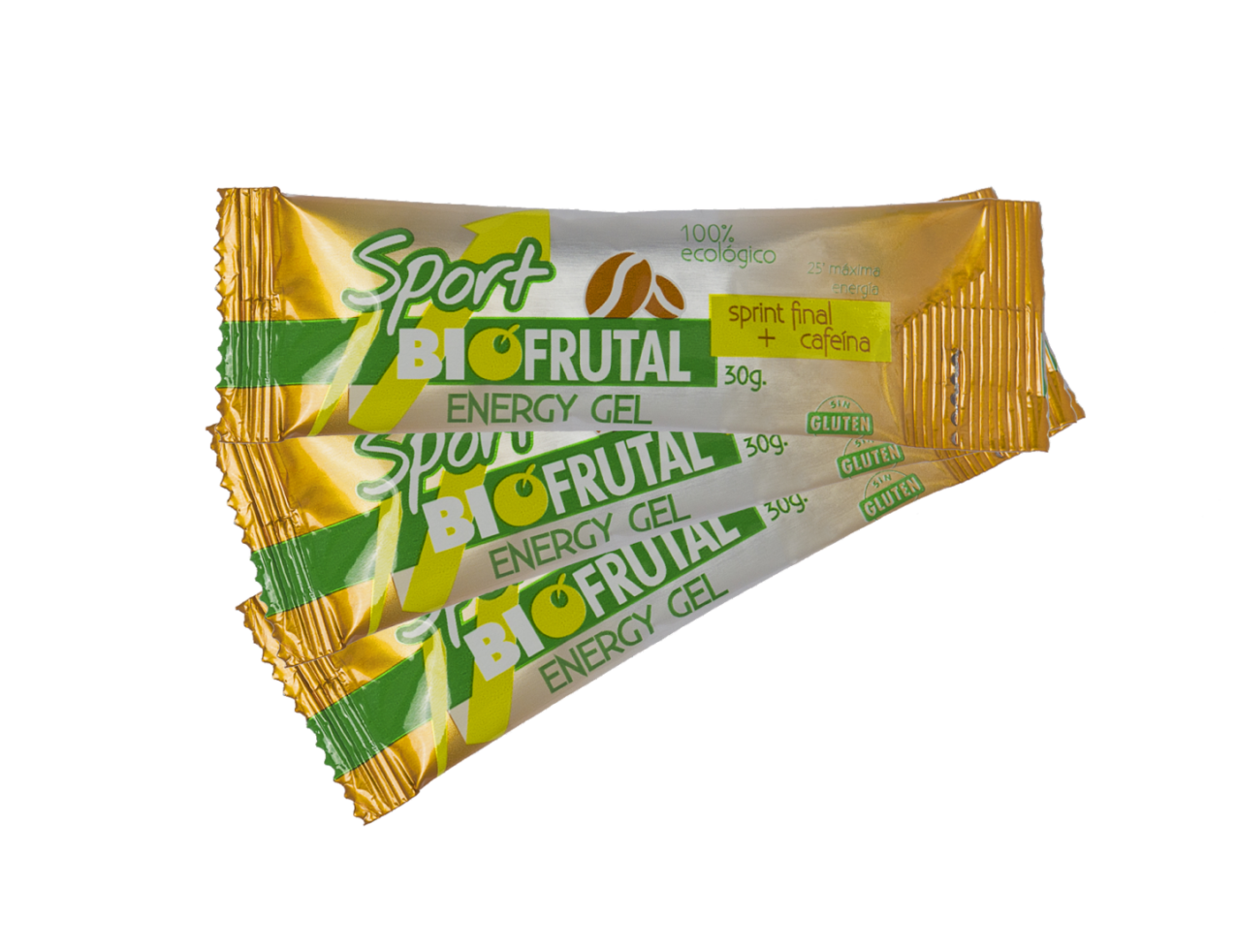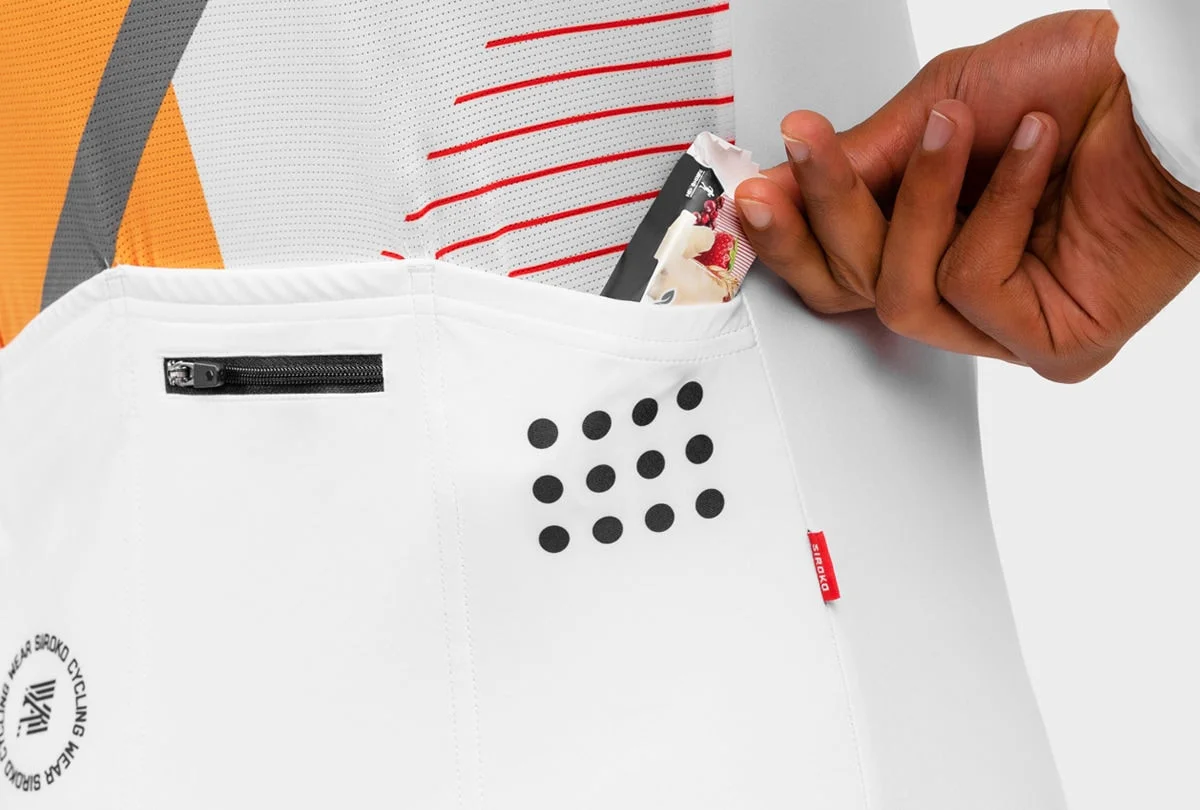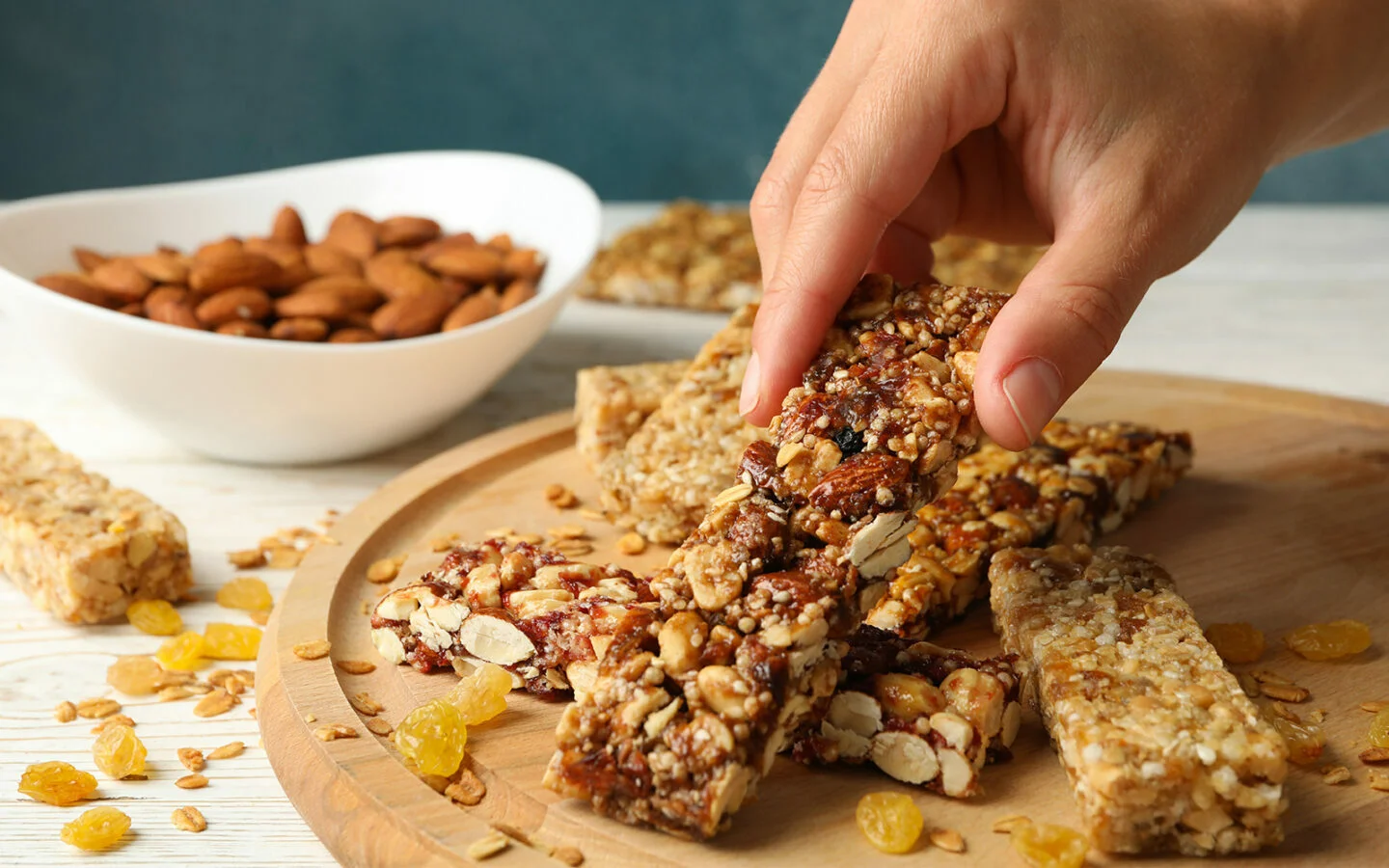Carbohydrates intake during exercise improves performance in cycling and other sports. The body of a trained cyclist can oxidize up to 120 g of carbohydrates per hour at a maltodextrin-to-fructose ratio of 2:1. So much for what science can tell us today. However, there are several options on the market to get that amount of energy. Gels and energy bars are two of them. Let’s take a look at their advantages and disadvantages:
Pros of energy gels

- High energy density. Only water-diluted carbohydrates. No fiber, protein or fat.
- They are easily digested. If they do not contain much water, it is best to consume them with water (200 ml) for faster gastric emptying.
- Carbohydrates are absorbed quickly. Once we hit the wall, it is already too late to fix it, but the fastest way to regain some strength is using energy gels.
- Easy to carry and eat on the bike. A key factor if we do not have much space in the jersey pockets or on the bike, or if we are in a competition or cycling event where speed and tension are high.
- Variety of flavors. Whether you like the classic ones (strawberry, orange, lemon, cola) or you enjoy trying different flavors (mint, peanut butter, beetroot and lemon), you will surely find a gel to your liking. You can even find unflavored ones.
- They do not get crushed, soften or melt. A gel will very rarely open or burst inside the jersey, although the wrapper may get punctured by a sharp object or damaged if it is transported often and not consumed.
Cons of energy gels
- Limited variety of textures. Depending on the amount of water, it can be watery or denser.
- Such a high concentration of carbohydrates can upset some stomachs, especially when they are not consumed regularly, are consumed without water or at the wrong time.
- If you are allergic to fructose, your choice is limited and you have to check the ingredients. The same applies to bars and basically any other product.
- Once opened, you have to drink the whole thing unless the packaging has a screw cap.
- They absorb heat both from the cyclist’s body and from the outside. Unfortunately, there is nothing you can do about this and although a hot gel is not particularly nice, it is still better than running out of energy.
- They cannot be shared unless you’re really close with your cycling buddies or there aren’t any fussy cyclists in the group.
- Sticky hands. It is easy for the gel to run down your fingers, leaving your hands, handlebars and everything else you touch sticky.
- Sticky jersey. If it is not squeezed well, gel may remain inside the wrapper and when you put it back in the pocket it may come out and stain the jersey.
- To open a gel, you have to bite the wrapper. You can keep the piece you bit off in your mouth. Do not spit it out, take it out of your mouth with the other hand and put it back in the pocket; don’t litter! It is not easy, that is why many manufacturers offer opening systems where the piece of wrapper remains hanging without falling.
Pros of energy bars

- The actual sensation of eating and getting some food in the stomach, both in terms of ingredients (cereals, nuts, dried fruit) and the chewing process. This also depends on the texture and form of the bar. The soft ones melt practically without chewing, while those with more cereals and nuts require more chewing.
- They provide energy gradually and steadily thanks to the ingredients, chewing and digestion. As in the previous point, it all depends on the texture and form.
- A wide variety of flavors, textures and forms. This is due to a wide variety of solid and liquid ingredients: cereals, dried fruit, nuts, honey, peanut butter, maple syrup, chocolate…
- You can eat a piece and leave the rest for later if you have not torn up the wrapper.
- You can share the bar with your fellow riders. Just cut or break off a piece and give it to them. It’s a good way to discover new flavors and textures.
Cons of energy bars

- The slower absorption of carbohydrates is a disadvantage when we need energy quickly.
- If they contain a lot of fiber, fat or protein, they slow down gastric emptying and can cause gastrointestinal problems.
- They are more difficult to eat because you have to chew them. Although some textures are very soft, they are not ideal for moments of high intensity, speed and tension.
- They take up more space and weigh more than gels.
- Some wrappers are difficult to open with your teeth. Plus, pieces of the bar can easily fall out of your hand or mouth.
- Heat and pressure can crush, break or soften the bars. It all depends on the type of ingredients, form of the bar and weather conditions.

Let’s draw three main conclusions:
- Gels are convenient for moments of high intensity, tension or when we need a quick energy boost.
- Bars are a medium to long term energy source. You need more time and a relatively calm moment while pedaling to grab, open, eat and digest a bar.
- If we combine both options properly we will get the best out of each one.




